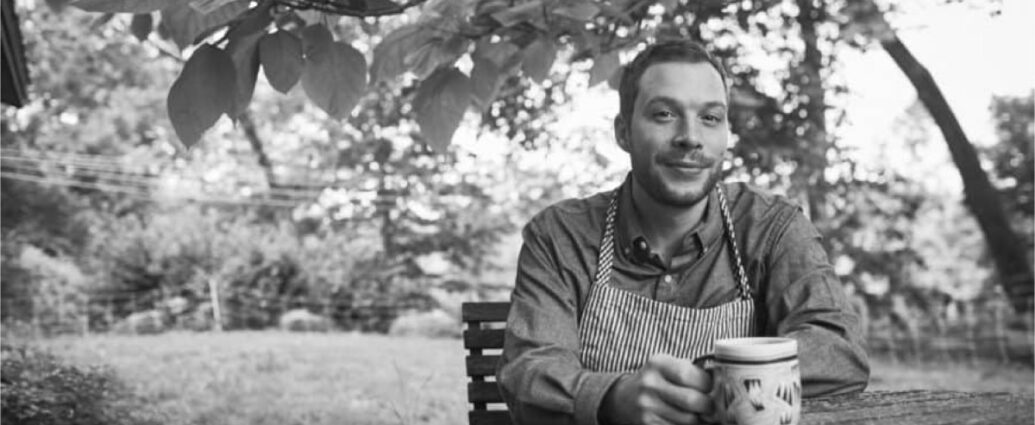When people hear Driftless, different foods quickly come to mind. The Driftless has historically been home to unique flavors the early settlers brought with them. Many English, German, Scandinavian, and Polish inspired dishes are still found here.
Today I am writing about a unique flavor. The flavor of foraged foods from wild plants. For many people, that wouldn’t sound appetizing. Before you quickly dismiss them, let’s see if they check all the boxes. Are they, Organic- check, local- check, free range- check, sustainable-check. Why then do people dismiss them? Perhaps they are viewed as survival foods, flavorless, or only something poor rural people eat. I think the bigger reason is that people have a strong fear of eating something poisonous.
What if foods foraged from the wild weren’t unpalatable, but somehow extraordinary? What if it’s the best-kept secrets you weren’t privy to until now? Tell me more you say? I have a two-word answer for you- Alan Bergo! Alan is known by the self-assigned moniker Forager Chef.

He may not have the name recognition of other famous chefs, but by the end of this article, you will place him among them.
For starters, Alan is a James Beard award-winning chef, although I doubt you will hear him tell you that. If you aren’t familiar, it is a very prestigious award. To Foodies it’s termed the “Oscars of the food world” but he is much more than that. He truly is a modern-day renaissance man with many talents. Alan is a chef, forager, writer, show host, author, and photographer. He is an alchemist who takes mundane looking ingredients and turns them into flavorful delicacies. some of which may be currently growing in your own yard. Alan doesn’t like the word forager he prefers hunter of plants and mushrooms. He finds great joy in the challenge of taking wild foods and turning them into stunning meals with an amazing presentation. He crushes the myth that wild food is bland, for survival, or the poor. I got the distinct pleasure of foraging with Alan for this article. Alan has a unique perspective on life. For all his success, he has had many setbacks in life, but they never hold him back. He has a special perseverance about him.
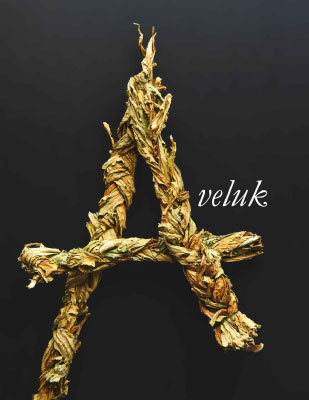
We meet in the Driftless area on private land he harvests from. When he looks out over the land, he doesn’t just see plants; he sees the land through his taste buds; he sees wild flavors. The first plant he harvested was Burdock. For those who are unfamiliar with Burdock. It thrives along field edges and disturbed soil and its large leaves may be easily confused with Rhubarb. For those that are familiar with Burdock, it may surprise you to know that it’s more than the bane of farmers. Alan uses the roots for a variety of recipes. On that day, he was using it for a dish called Kinpria. I learned it is a Japanese cooking technique that uses starchy vegetables. You can find more here on Alan’s site. Traditional Kinpira Gobo with Burdock – FORAGER | CHEF. His quick command of the shovel lets you know that isn’t his first time digging these roots. He places the business end of the shovel a few inches out from the base of the Burdock and jumps on it, sending it crunching into the ground. Four times around the plant, he grasps the large leaves and gives them a tug and with a soft pop; the leaves give way to the prize root they have been hiding all this time. In a matter of minutes, he had a few pounds of these roots. We proceeded down an old path. Alan is “shopping” for food with a scissor and a basket in hand. He clipped his way along the path, collecting various greens. Things like Golden Rod shoots, Sochan-Cut leaf Coneflower, Chickweed, Dandelion greens, Mitsuba, and shoots of Smilax, to name just a few. I remember thinking what a joyous place to shop, no lines or coupons needed! The serenade of bird songs was way better than any music my grocery store plays! It was surprising to see how quickly his basket filled up. I’d say in less time than I take to navigate the grocery store for a similar quantity of food. Also, it connects you to the land and your past. I couldn’t help but think of the stories my Depression era grandpa would tell of plants they collected during the” lean times”. To think you may be looking at the same plants your ancestors would harvest, or ones that indigenous people of the area would seek. The same plants that feed your ancestors now feed you. Now that is connection at the deepest level!

All while foraging with him, he told the story about how he got into cooking and on the wild food path. He started in fast food, not where you might expect a chef to start. In fact, he never went to cooking school. Inspiration came at a young age from a cookbook his grandma gave him Lidia’s Italian- American Kitchen. His introduction to wild foods differs from most people’s. He first saw them while working in high-end restaurants that used local ingredients. At first, he didn’t think they were easily available. He recounted how he was disk golfing and found a chicken of the wood mushroom on the course. For him, that was all it took. He charged headlong into learning local mushrooms. Before long, he was supplying the restaurant with them. He would go out mushroom hunting before work.
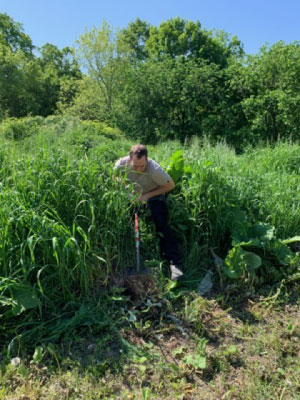
One of the first things you will notice about Alan is he is brilliant and very passionate about food, especially wild foods. That day I got a glimpse into the mind of a chef. He would talk a lot about the subtle flavor of foods and things they would pair well with. In a short time around him, you will hear about foods with exotic names along with a bit of history of the plant. Of the many things I learned that day, the one that stuck with me was an Armenian soup called Aveluk made with Curly Dock leaves. He spoke about how the leaves had to be woven to keep their texture. Just being around Alan will inspire you to want to step up your cooking game. That day alone, I had heard of numerous mushrooms, plants and foods that were all new to me, and I have been foraging for years.
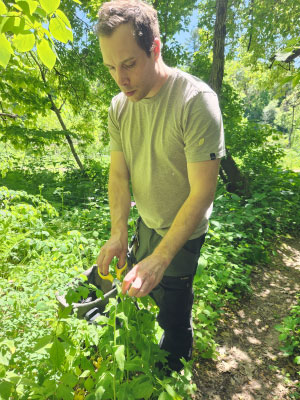
From what you have read, you may wonder if wild food is for you, and where would you even begin? One of the best starter resources would be Alan’s book The Forager Chef’s book of Flora. I can attest this cookbook is in a class all by itself. To call it a cookbook is to sell it short. It’s way more than a book of recipes. It’s filled with valuable information on the plants that are used in the recipes, processing techniques, storage and fermentation. His talents don’t end in the kitchen, his talents behind the camera are very apparent when you see how lavishly illustrated the cookbook is. I’m eagerly anticipating the release of his mushroom cookbook.
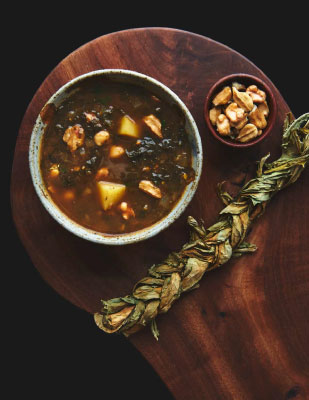
There were many takeaways that day hunting plants with Alan. He talked about all the challenges he has endured to get to where he is today. The long hours in stressful restaurants, and how he once got Lyme disease that left him almost incapacitated. Alan became very sensitive to light and sound and had to cook with an eye patch. Through all that he endured. He is now happy doing the work that he does. More than once, he said he couldn’t imagine doing any other work. In fact, he was on an original path he had gone on to business school, and he was so glad he didn’t go that route. If Alan can overcome many challenges to get to where he is today, maybe you can take from his inspiration. Give wild flavors a chance. Learning edible plants is easier than you may think. Maybe the bigger message is to follow your dreams!
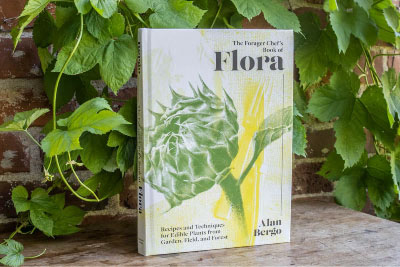
Who knows what delicacy is waiting to be found in your backyard. Maybe you can be the next food hunter- Bon Appetite!
This just scratches the surface of Alan. If you’d like to learn more about Alan, he’s on many platforms. A quick search on his name will reveal numerous podcasts and videos. He can be found on Instagram and more.
He also premiered on an episode of Chef’s Vs Wild on Hulu. It’s a competition show where two chefs compete against each other using wild foraged foods. I won’t say how it ended, but it’s clear who I was rooting for. On that episode you will get a glimpse of what it’s like to see the flavors of nature! He is the creator and star of the tv series The Wild Harvest: Field, Forest, Feast.
By: Vincent Aiello
Featured Image From foragerchef.com

